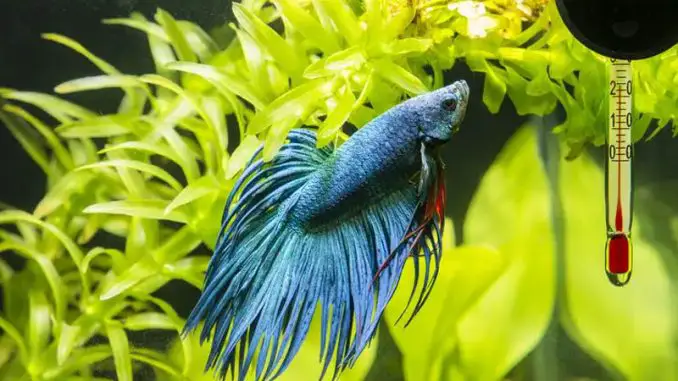
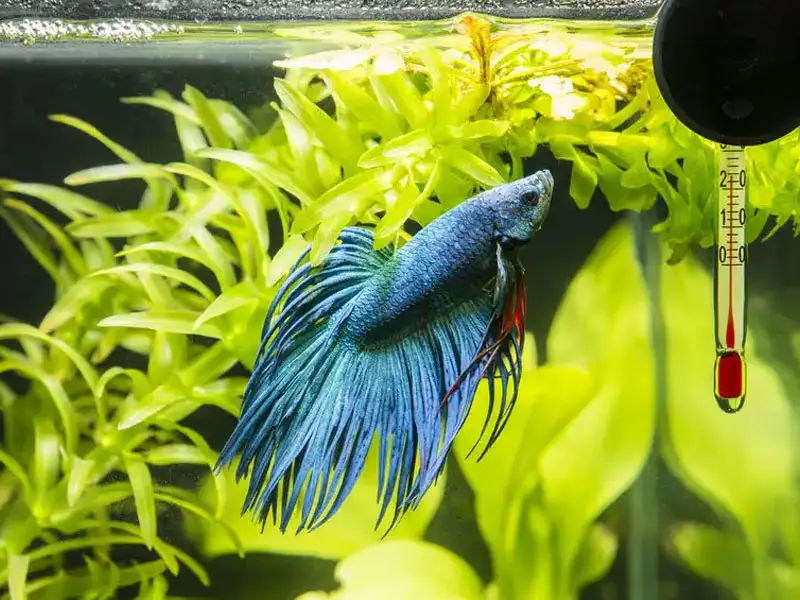
If you are a keen aquarist, you may have just brought home your new betta fish. When you are getting the tank ready, you will need to know the ideal betta temperature to ensure that the water is neither too warm nor too cold.
Like most creatures, tropical fish have their preferences when it comes to temperature, and bettas are no different. They do not like extremes in temperature, so the water temperature needs to be carefully monitored.
What Is The Ideal Betta Temperature?
Bettas cannot survive in water that is too cold. The average room temperature for water is about 68° Fahrenheit. This is far too cold for bettas.
The ideal betta temperature is 75°-76° Fahrenheit. At this temperature, your betta will be healthy and perfectly happy. He will eat well, sleep comfortably and swim around energetically.
How Can You Keep The Temperature Constant?
The only way to maintain the ideal temperature in your aquarium is by using a heat pump. The heater needs to be kept running 24 hours a day to keep the temperature at a constant level.
An aquarium heater is made with a built-in thermostat. This turns off the element when the water reaches the desired temperature. As soon as it starts to cool down, the thermostat kicks in, and the element is turned on once again.
In this way, the temperature of the water is never allowed to drop below a certain point. It may fluctuate by only a few degrees, but the variation will be limited that it will not harm.
What Is The Lowest Temperature A Betta Can Tolerate?
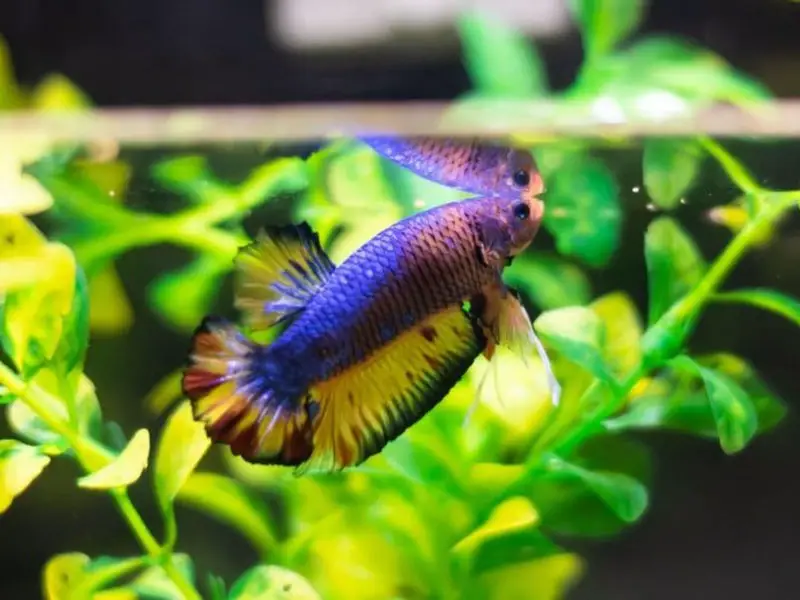
Tropical fish like the betta always need warmer water. The betta originates from the slow-moving rivers, swamps, and marshlands of Southeast Asia. This tropical fish is native to countries like Thailand, Cambodia, Indonesia and Vietnam.
In its native waters, the temperature of the water never drops below 70°F, and the betta likes its aquarium conditions to mimic that. These little tropical fish thrive in water that is between 75°F and 78°F.
As soon as the temperature of the water drops below 74°F, a betta will start to feel uncomfortable. If it drops below 70°F, it will not be merely uncomfortable; it will start getting ill.
When the water is colder than 70°F, a betta fish will start to become lethargic. Its activity will decrease, and you will notice that it is spending more and more time in an inert position near the bottom of the tank.
If the temperature drops below 68°F, your betta will most probably not survive the cold water. Its internal organs will start to malfunction, and its entire system will start shutting down.
It is important to check the water temperature in your aquarium regularly. Also, look out for signs that your betta may be too cold. The first indication is that the fish will start to become lethargic.
Because the betta, like all fish, is a cold-blooded creature, it is unable to generate its own heat from within. Therefore they need to regulate their body temperature by absorbing heat from the surrounding water. If the water is too cold for them to absorb sufficient warmth, they will die.
What Is The Highest Temperature A Betta Can Tolerate?
Just like the betta cannot tolerate water that is too cold, so too it will not survive if the temperature rises above a certain point.
While the ideal betta temperature is 75°-76° Fahrenheit, your betta will probably be okay as long as the temperature remains below 80°F. Once it reaches 80°F and above, your betta will start showing signs of poor tolerance to the higher temperature.
The reasons for a betta’s inability to tolerate water that is too warm are two-fold.
- The hotter the water, the lower the concentration of oxygen in the water. As the water temperature rises, the level of available oxygen in the water is depleted. This makes it difficult for the fish to breathe. If you notice that your betta is hovering close to the surface of the water, it may be struggling to breathe and trying desperately to gasp in more oxygen from above the surface. Betta fish are known as anabantoids. They have a unique organ called a labyrinth. This special organ makes them able to breathe in oxygen from the air above the surface of the water and underwater through their gills, as other fish do. When a betta is spending most of its time hovering close to the surface of the water, this could be an indication that the water is too warm, and there is not enough oxygen in the water. The betta compensates for this by trying to use its labyrinth organ to inhale enough oxygen from above the surface of the water.
- Higher water temperature is likely to increase the metabolism of your betta fish. A raised metabolism will create a need for a higher level of oxygen. The fish will start to breathe very rapidly, trying to get enough oxygen to meet the needs of its faster metabolism. Higher water temperature directly causes an elevated metabolism, which could eventually kill your betta fish.
If the water becomes very hot, reaching an 85°F or higher temperature, your fish will die. It will literally start cooking.
Signs That Your Betta Temperature May Be Off Balance
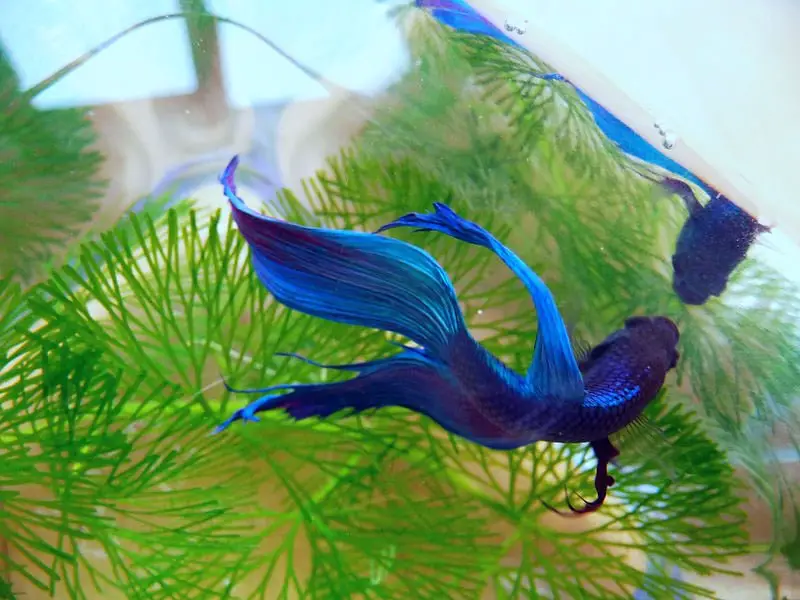
If the water in your aquarium is becoming either too cold or too warm, you will probably start to notice certain changes in your fish’s behavior. Initially, these changes might be quite subtle, and you might not be aware of them immediately.
However, as the temperature either drops or rises, the change’s effects on your betta will become more pronounced. You will be more likely to observe these strange and unusual behavior patterns.
Some of the things to watch out for include:
- Frantic swimming around the tank
If your betta is swimming frantically around the tank and seems to be super-charged with energy, this may be the first sign that the betta’s temperature is not right. His sudden burst of energy is probably going to burn out very quickly as other symptoms set in.
- Bumping into things in the tank
If your betta is swimming around and bumping into the sides of the tank, or the plants and logs, or bumping its nose along the bottom of the tank, this could be an indication that all is not well with the temperature of the water.
A sudden drop or rise in temperature causes all the organs to malfunction, including the eyes. The change in temperature may impair your betta’s vision.
- Hovering at the surface of the water
If your betta is constantly hovering at the surface of the water, this could be an indication that he is gasping for air. He will be using his labyrinth organ to try to inhale as much oxygen as possible from above the surface of the water because the raised water temperature has depleted the oxygen supply in the water.
- Unusually lethargic behavior
The betta is usually quite a frisky little fish and is generally an energetic swimmer. If you observe that he has become somewhat lethargic and appears to be lacking in energy, this is a red flag.
As the temperature of the water drops, so the betta’s internal temperature will also start to drop. The betta copes with this by trying to conserve energy. When his movement starts slowing down, this is often the first sign that the water is getting too cold for him.
- Lying on its side
Sometimes a betta will stop swimming and will lie inert on its side if the water is too cold.
- Hovering just above the substrate of the tank
If your betta temperature is getting too low, your fish may try to retain warmth by remaining as close as possible to the bottom of the tank.
How To Raise Your Betta Temperature
The best way to maintain the correct water temperature for your betta is by using a special water heater in your aquarium. An aquarium heater is thermostatically controlled, and the thermostat can be programmed to keep the water at the ideal temperature.
If your heater breaks or malfunctions, and the water is becoming too cold for your betta, there are a few things you can do as a temporary measure to raise the temperature until you can get the heater repaired or replaced.
- Warm a thick towel by putting it in the dryer for a few minutes. Wrap the hot towel around the outside of your tank. The heat will be transferred from the towel, and the water should warm up slightly.
- Move the tank to a sunny position in your house. Place it in a room that gets full sun, preferably directly in front of the window. The heat of the sun will help to warm up the water.
- Wash out an empty plastic bottle. Wash the outside of the bottle very well with clean water. Fill the bottle with hot – not boiling – water, and place the bottle of hot water in your fish tank. The bottle will quite literally act like a ‘hot water bottle’ and help elevate the water temperature in the tank.
- Remove 5-10% of the water in the tank. Replace it with very warm – not boiling – water. The hot water should be added very gradually, by slowly pouring in a little at a time. Try to pour the hot water as far away from your fish as possible to avoid harming the fish.
What Can You Do If The Water Becomes Too Warm?
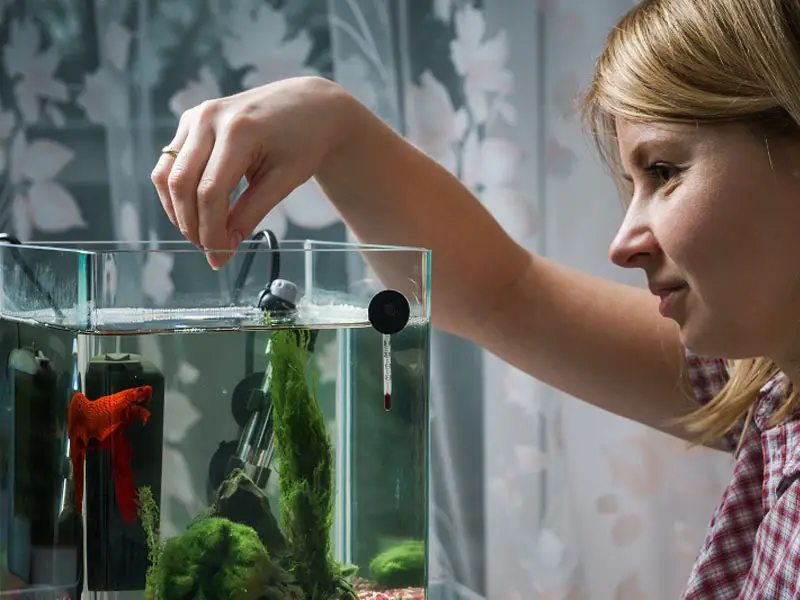
Occasionally your heater can malfunction, and the thermostat can stop working. This can result in the water becoming very hot. The most obvious solution to this problem is to turn off the water heater immediately. But you may need to take further steps to cool down the water.
In extremely hot weather, if the outside temperature is very high, this can also raise the water temperature in your aquarium. If this happens, you will need to implement measures to cool the water down before the heat affects your fish.
Any of the following methods should help to cool the water sufficiently:
- Remove the cover from the aquarium. Place a fan nearby and direct the flow of air on the surface of the water. The fan will help cool air to circulate above the tank. This will help to cool the water. If you remove the cover, ensure that the water level is not high enough for your fish to leap out of the tank. You might need to remove some of the water to keep the fish in the tank.
- A water aerator is usually used to help keep up the oxygen levels in the water. However, it can also be a useful tool to help to cool the water in the tank if it starts getting too warm.
- If you have a light in your aquarium, turn it off for a few hours. Lights generate a certain amount of heat. By turning off the light, you will be removing this heat source, and the water will cool down as a result.
- Remove between 5-10% of the water, and replace it with cooler water. The cool water should be added very gradually to prevent the fish from becoming stressed from a sudden drastic change in tank conditions.
- Place a few ice cubes in a clean bag. Seal the bag well and place it gently in the tank, leaving it to float in the water. As the ice melts in the bag, the water in the tank will cool down.
These are some of the most important aspects relating to the water temperature if you keep betta fish in a home aquarium.
By following these guidelines, you should be able to keep your betta temperature stable and constant.



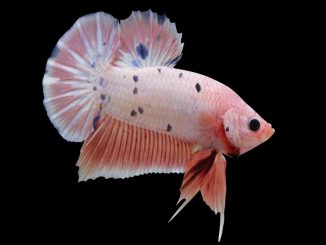
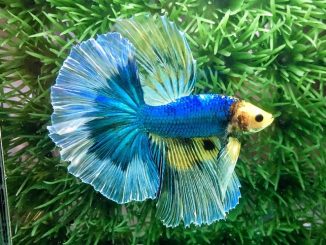
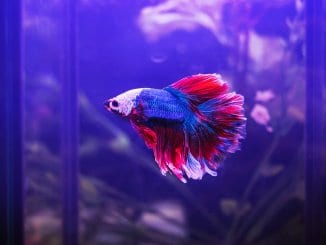



Be the first to comment